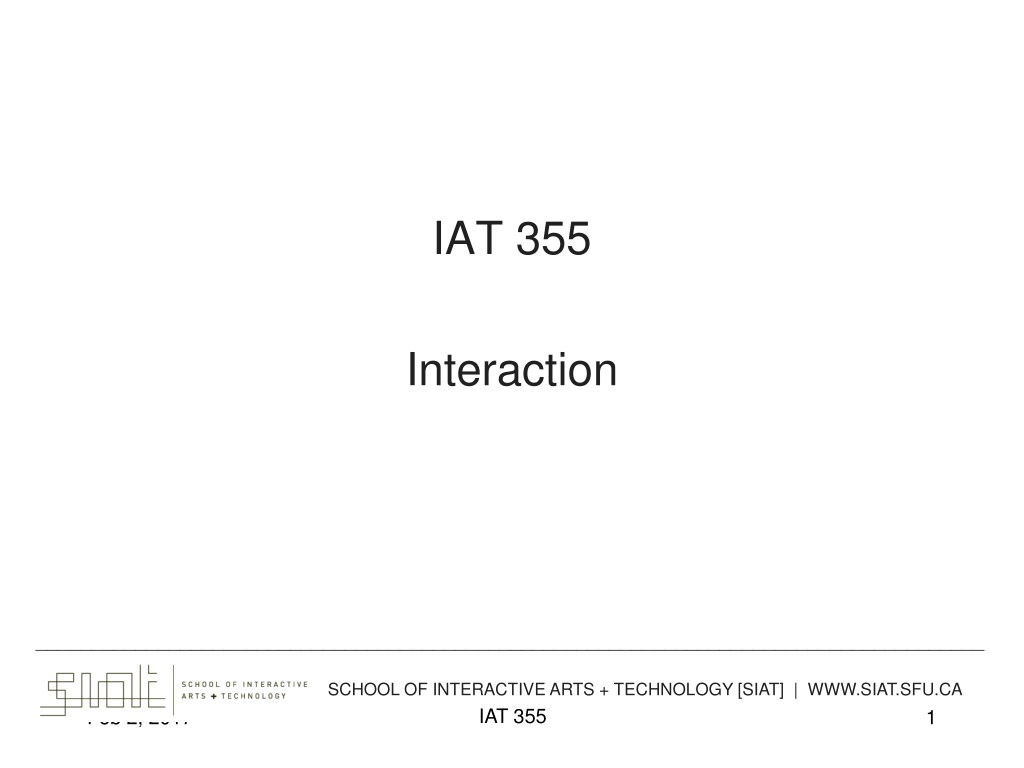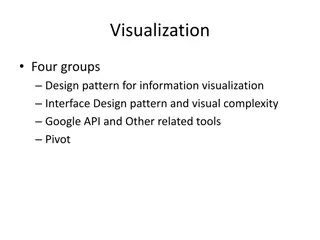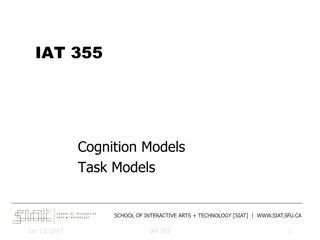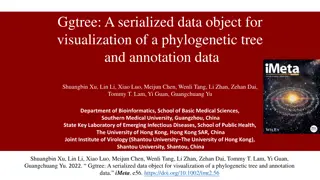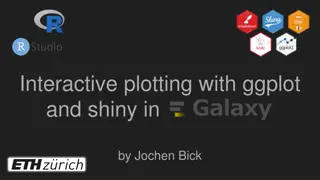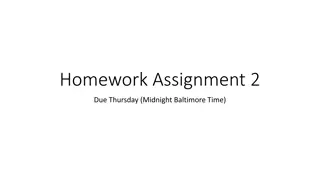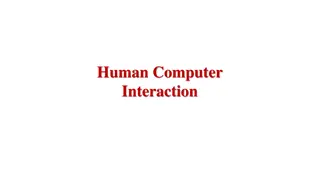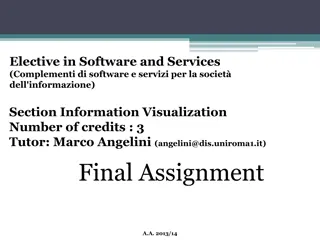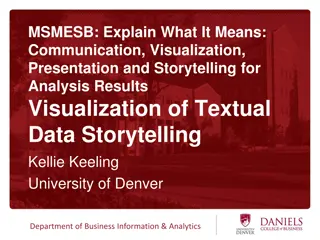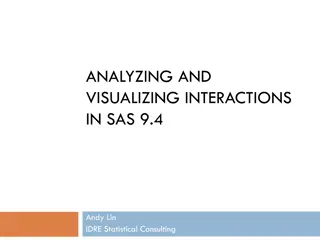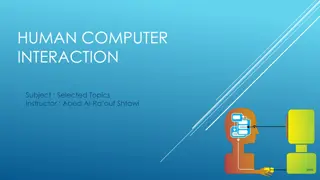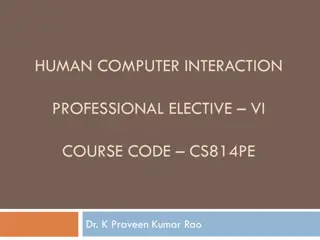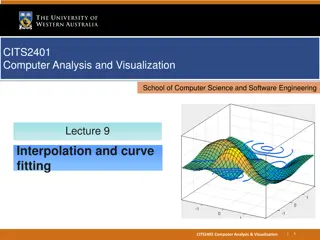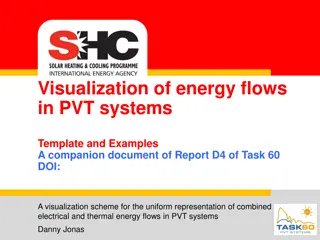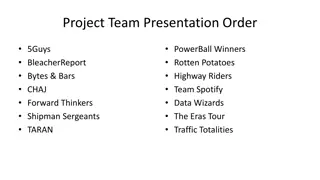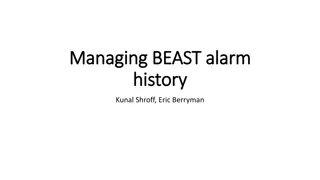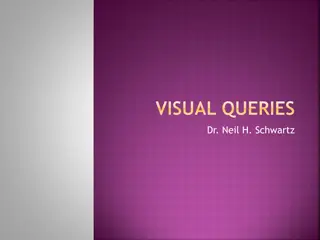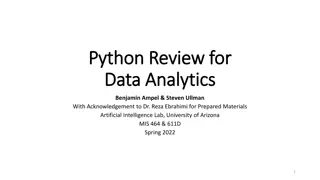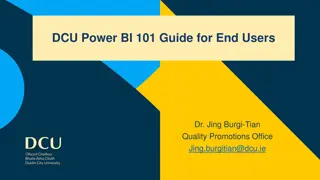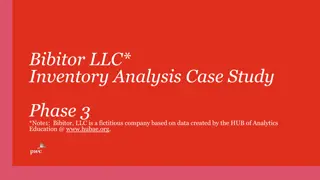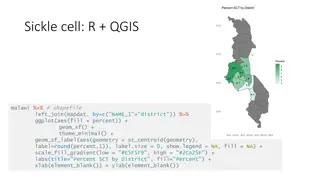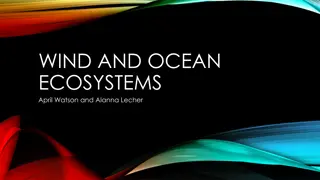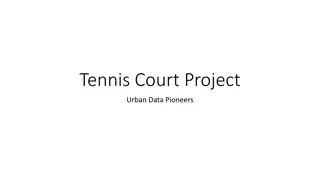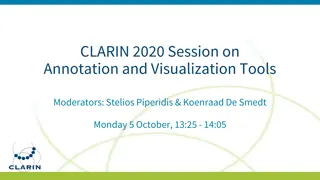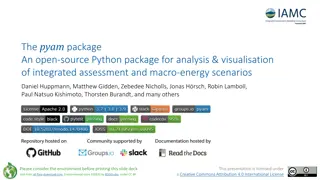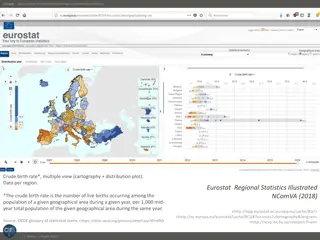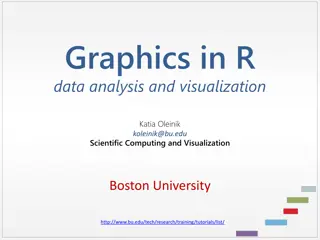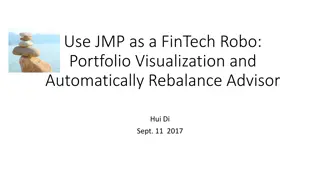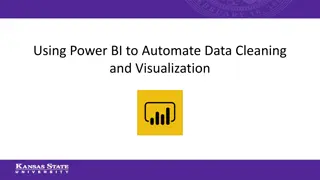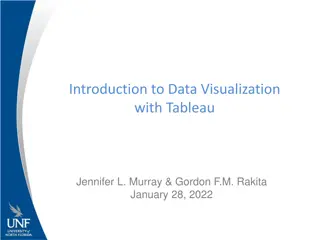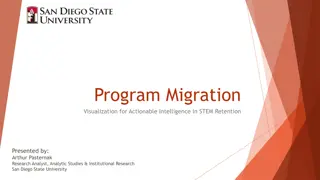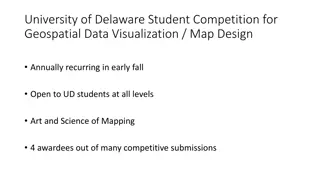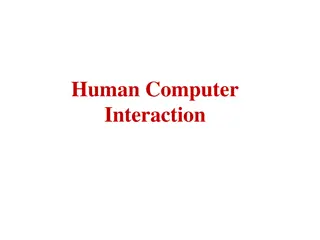Understanding Interaction in Information Visualization
Information visualization in the realm of interactive arts and technology involves two main components: Representation and Interaction. Representation focuses on visual elements, while Interaction drives user engagement and action. Through innovative visual representations and user interaction, infovis distinguishes itself from static visual representations. Different levels of interaction response time impact user experience. Various interaction types, such as highlighting, zooming, and filtering, enhance the exploration of data. Selection and pop-up tooltips further facilitate user engagement and information retrieval in interactive visualizations.
Download Presentation

Please find below an Image/Link to download the presentation.
The content on the website is provided AS IS for your information and personal use only. It may not be sold, licensed, or shared on other websites without obtaining consent from the author. Download presentation by click this link. If you encounter any issues during the download, it is possible that the publisher has removed the file from their server.
E N D
Presentation Transcript
IAT 355 Interaction ______________________________________________________________________________________ SCHOOL OF INTERACTIVE ARTS + TECHNOLOGY [SIAT] | WWW.SIAT.SFU.CA IAT 355 Feb 2, 2017 1
Interaction Two main components in an infovis Representation Interaction Representation gets all the attention Interaction is where the action is (no pun intended) IAT 355 Feb 2, 2017 2
Analysis through Interaction Very challenging to come up with innovative, new visual representations But can do interesting work with how user interacts with the view or views It s what distinguishes infovis from static visual representations on paper Analysis is a process, often iterative with branches and side bars IAT 355 Feb 2, 2017 3
Interaction Levels Response Time 0.1 sec animation, visual continuity, sliders 1.0 sec system response, conversation break 10. sec cognitive response IAT 355 Feb 2, 2017 4
Example Even simple interaction can be quite powerful Stacked histogram http://www.hiraeth.com/alan/topics/vis/hist.html http://www.meandeviation.com/dancing-histograms/ IAT 355 Feb 2, 2017 5
Interaction Types Dix and Ellis (AVI 98) propose Highlighting and focus Accessing extra info drill down and hyperlinks Overview and context zooming and fisheyes Same representation, changing parameters Linking representations temporal fusion IAT 355 Feb 2, 2017 6
Interaction Types Daniel Keim s taxonomy (IEEE TVCG 2002) includes Projection Filtering Zooming Distortion Linking and brushing IAT 355 Feb 2, 2017 7
Selection Using pointer (typically) to select or identify an element Often leads to drill-down for more details IAT 355 Feb 2, 2017 8
Pop-up tooltips Hovering mouse cursor brings up details of item TableLens www.inxight.com http://www.youtube.com/watch?v=qWqTrRAC52U IAT 355 Feb 2, 2017 9
Selection More details are displayed upon selection IAT 355 Feb 2, 2017 10
Details-on-Demand Term used in infovis when providing viewer with more information/details about data case or cases May just be more info about a case May be moving from aggregation view to individual view May not be showing all the data due to scale problem May be showing some abstraction of groups of elements Expand set of data to show more details, perhaps individual cases IAT 355 Feb 2, 2017 11
Hyperlinks Linkages between cases Exploring one may lead to another case Example: Following hyperlinks on web pages IAT 355 Feb 2, 2017 12
Rearrange View Keep same fundamental representation and what data is being shown, but rearrange elements Alter positioning Sort IAT 355 Feb 2, 2017 13
Changing Representation May interactively change entire data representation Looking for new perspective Limited screen real estate may force change IAT 355 Feb 2, 2017 14
Example Selecting different representation from options at bottom IAT 355 Feb 2, 2017 15
Highlighting Connections Viewer may wish to examine different attributes of a data case simultaneously Alternatively, viewer may wish to view data case under different perspectives or representations But need to keep straight where the data case is IAT 355 Feb 2, 2017 16
Brushing Applies when you have multiple views of the same data Selecting or highlighting a case in one view highlights the case in the other views Very common technique in InfoVis IAT 355 Feb 2, 2017 17
Brushing IAT 355 Feb 2, 2017 18
Filtering/Limiting Fundamental interactive operation in infovis is changing the set of data cases being presented Focusing Narrowing/widening IAT 355 Feb 2, 2017 19
Zooming/Panning Many infovis systems provide zooming and panning capabilities on display Pure geometric zoom Semantic zoom More in later lecture IAT 355 Feb 2, 2017 20
Dynamic Query Probably best-known and one of most useful infovis techniques Compare: Database query Query language Select house-address From van-realty-db Where price >= 400,000 and price <= 800,000 and bathrooms >= 3 and garage == 2 and bedrooms >= 4 IAT 355 Feb 2, 2017 21
Typical Query Response 124 hits found 1. 748 Oak St. - a beautiful 2. 623 Pine Ave. - 0 hits found IAT 355 Feb 2, 2017 22
Problems Must learn language Only shows exact matches Don t know magnitude of results No helpful context is shown Reformulating to a new query can be slow IAT 355 Feb 2, 2017 23
Dynamic Query Specifying a query brings immediate display of results Responsive interaction (< .1 sec) with data, concurrent presentation of solution Fly through the data , promote exploration, make it a much more live experience Change response time from 10s to 0.1s IAT 355 Feb 2, 2017 24
Dynamic Query Constituents Visual representation of world of action including both the objects and actions Rapid, incremental and reversible actions Selection by pointing (not typing) Immediate and continuous display of results IAT 355 Feb 2, 2017 25
Imperfection Idea at heart of Dynamic Query There often simply isn t one perfect response to a query Want to understand a set of tradeoffs and choose some best compromise You may learn more about your problem as you explore Example: https://www.padmapper.com/ IAT 355 Feb 2, 2017 26
Padmapper.com IAT 355 Feb 2, 2017 27
Query Controls Variable types Binary nominal - Buttons Nominal with low cardinality - Radio buttons Sort columns Missing: Ordinal, quantitative - sliders IAT 355 Feb 2, 2017 28
Search for Diamonds www.bluenile.com/diamond-search IAT 355 Feb 2, 2017 29
Dynamic Query Qualities Strengths Work is faster Promote reversing, undo, exploration Very natural interaction Shows the data Weaknesses Operations are fundamentally conjunctive Can you formulate an arbitrary boolean expression? !(A1 V A2) ^ A3 V (A4 V A5 ^ A6) Controls are global in scope Controls must be fixed in advance Data must be prepared for instant access IAT 355 Feb 2, 2017 30
Dynamic Query Weakness Controls take space! Put data in controls... Lower Range Upper Range Thumb Data Distribution Thumb IAT 355 Feb 2, 2017 31
Dynamic Query Problem As data set gets larger, real-time interaction becomes increasingly difficult Storage - Data structures linear array grid file quad, k-d trees bit vectors IAT 355 Feb 2, 2017 32
Attribute Exploration Seen in Spence Chapter 3 Change range to narrow query Pick histogram colums to select non- contiguous ranges IAT 355 Feb 2, 2017 33
Summary Interactive Tasks Highlighting and focus Accessing extra info drill down and hyperlinks Filtering Overview and context zooming and fisheyes Same representation, changing parameters Linking representations temporal fusion IAT 355 Feb 2, 2017 34
